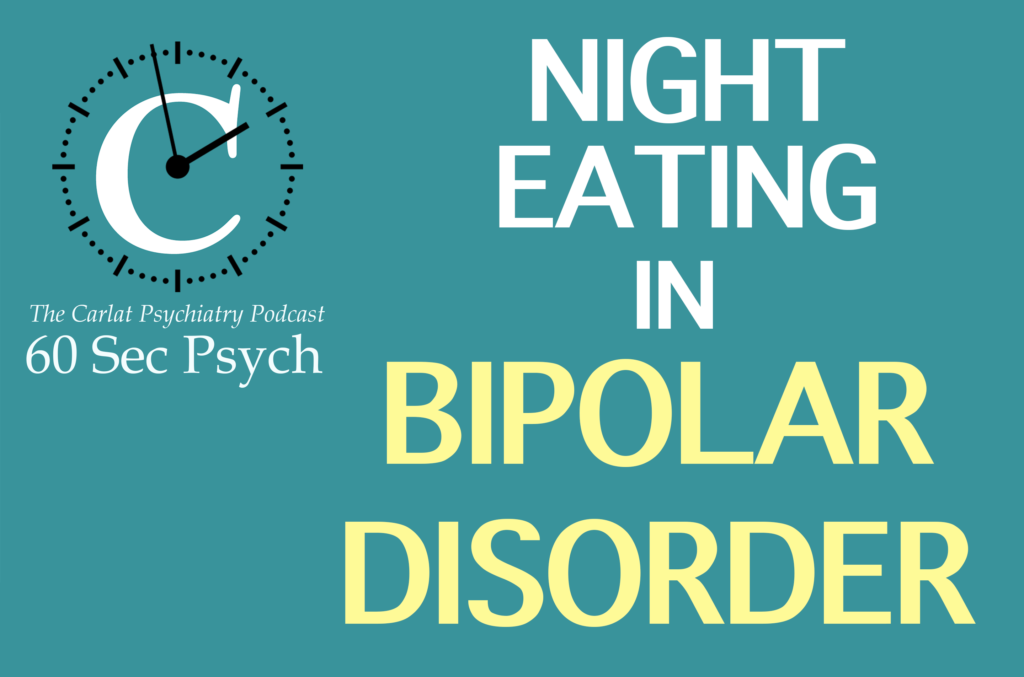Night Eating in Bipolar Disorder [60 Sec Psych]
Podcast, Volume , Number ,
https://www.thecarlatreport.com///
Not only do we get more urges to eat at night, but we tend to overeat and lean more towards junk food. So how does that play out in bipolar disorder? This new study by Francisco Romo-Nava and colleagues at the University of Cincinnati and the Mayo Clinic sought to find out by asking 783 adults with bipolar disorder about their eating habits and circadian patterns of energy and sleep. [Study Link]
Published On: 12/12/20 Duration: 4 minutes, 43 seconds Transcript: In a short-lived ad campaign, Taco Bell tried to convince Americans to add a fourth meal in the twilight hours between dinner and breakfast. But we don’t need much convincing. Midnight snacking is common, and it’s particularly common in night-owls with the “evening chronotype” circadian rhythm. Not only do they get more urges to eat at night, but they tend to overeat and lean more towards junk food. So how does that play out in bipolar disorder? This new study by Francisco Romo-Nava and colleagues at the University of Cincinnati and the Mayo Clinic sought to find out by asking 783 adults with bipolar disorder about their eating habits and circadian patterns of energy and sleep. 27% of the patients were night-owls. That’s consistent with other studies, which generally find that the night-owl type is about 3 times more common in bipolar disorder. It’s also more common in regular unipolar depression, although there the association is not as strong. These evening types also had significantly higher rates of binge eating, bulimia, obesity, and stronger cravings for unhealthy foods. They skipped breakfast more often, and ate more fried foods, snacks, and soft drinks and fewer vegetables. But the story does not end there. In an early study, the same research group found that evening types had a worse course with bipolar disorder. Their mood problems started earlier in life, and they had more rapid cycling, anxiety, substance abuse, and suicide attempts. Medical problems that went along with the evening type included high blood pressure, migraines, asthma, and obstructive sleep apnea. The authors point to hope in small clinical studies of morning light therapy and evening melatonin. These treatments normalized eating behaviors and circadian rhythms in people with anorexia, bulimia, as well as in night-owls who overate in the evening. While morning light seems to help the problem, evening light does not, and instead it’s evening darkness that reduces appetite and weight gain. Blue light suppresses melatonin, and there’s a direct line in epidemiologic studies between how much blue light people are exposed to at night and how much weight they gain. Blue light blocking glasses can reduce this problem, as can melatonin tablets. Melatonin (3-5 mg at night) has also been used successfully in two studies to reduce weight gain on antipsychotics. The bottom line. Pay attention to night-owls with mood disorders. They are at risk for physical and mental problems, and simple changes like a morning light box or evening blue-light blockers can help. Got feedback? Take the podcast survey.




Leave A Comment
You must be logged in to post a comment.